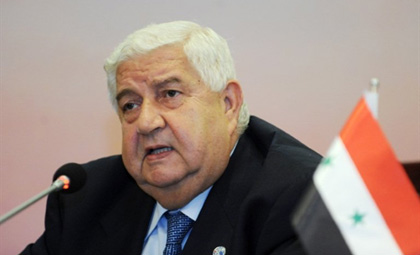Views of the analysts and experts differ concerning Iran’s nuclear programme agreement. Some believe that Iran achieved the goals of its nuclear programme, which thus poses a security danger to the Middle East region. Others believe that there are under-the-table negotiations between the US and Iran to curtail the influence of Gulf Cooperation Council (GCC) countries and Pakistan. On the other hand, some believe in a Western-Middle Eastern conspiracy against Iran.
The Joint Comprehensive Plan of Action (JCPA) were decided in Lausanne, Switzerland on 14 July 2015 regarding Iran’s nuclear programme between the Permanent five – the US, the UK, France, Russia, and China – and Germany (P5+1), the EU, and Iran. The six key parameters of the JCPA are enrichment, inspections and transparency, reactors and reprocessing, sanctions, and phases.
Enrichment
Iran agreed to reduce its installed centrifuges and its current stockpile of Low-Enriched Uranium (LEU) by approximately two-thirds.
Iran agreed to not enrich uranium over 3.67% and to not build any new facilities for the purpose of enriching uranium for at least 15 years. Iran will convert its facility at Fordow so that it is no longer used to enrich uranium for at least 15 years, using it as a nuclear, physics, technology, and research centre.
It agreed to only enrich uranium using its first generation (IR-1 models) centrifuges at Natanz for ten years, removing its more advanced centrifuges.
Inspections and transparency
The International Atomic Energy Agency (IAEA) will have regular access to all of Iran’s nuclear facilities, including Iran’s enrichment facility at Natanz and its former enrichment facility at Fordow. The IAEA will be allowed to use the most up-to-date, modern monitoring technologies.
Inspectors will have access to the supply chain that supports Iran’s nuclear programme, in addition to uranium mines. Additionally, there will be continuous surveillance for the next 25 years at uranium mills, where Iran produces yellowcake.
Inspectors will have continuously survey Iran’s centrifuge rotors, bellows production, and storage facilities for 20 years. Iran’s centrifuge manufacturing base will be frozen and placed under continuous surveillance.
Reactors and Reprocessing
Iran agreed to redesign and rebuild a heavy water research reactor in Arak, based on a design that is agreed to by the P5+1, which will not produce weapons grade plutonium and which will support peaceful nuclear research and radioisotope production.
The original core of the reactor, which would have enabled the production of significant quantities of weapons-grade plutonium, will be destroyed or removed from the country. Iran made a commitment to refrain from reprocessing research and development on spent nuclear fuel for an indefinite period of time. Iran will not build any additional heavy water reactors for 15 years.
Sanctions
Iran will receive sanctions relief if it verifiably abides by its commitments. However, US and EU nuclear-related sanctions will be suspended after the IAEA verifies that Iran has taken the key nuclear-related steps outline in the programme. If at any time Iran fails to abide by its commitments, the previously enforced sanctions will be reapplied.
All past UN Security Council resolutions on the Iran nuclear issue will be lifted simultaneous with the completion, by Iran, of nuclear-related actions addressing all key concerns: enrichment, Fordow, Arak, possible military dimensions (PMD), and transparency.
If an issue of significant non-performance cannot be resolved through that process, all previous UN sanctions could be re-imposed. US sanctions on Iran for terrorism, human rights abuses, and ballistic missiles will remain in place under the deal.
Phasing
For ten years, Iran will limit domestic enrichment capacity and research and development, ensuring a breakout timeline of at least one year. Beyond that time period, Iran will be bound by its long-term plans related to enrichment, enrichment research, and development that it shared with the P5+1.
For 15 years, Iran will limit additional elements of its programme. The limitations include, for instance, stipulations that Iran will not build new enrichment facilities or heavy water reactors, will limit its stockpile of enriched uranium, and will accept enhanced transparency procedures.
Important inspections and transparency measures will continue beyond 15 years. Iran’s adherence to the Additional Protocol of the IAEA is permanent, including the IAEA’s broadly granted access and transparency obligations. The robust inspections of Iran’s uranium supply chain will last for 25 years.
Even after the period of the most stringent limitations on Iran’s nuclear programme, Iran will remain a party to the Nuclear Non-Proliferation Treaty (NPT), which prohibits Iran’s development or acquisition of nuclear weapons and requires IAEA safeguards on its nuclear programme.
According to JCPA, lifting the international economic sanctions against Iran and releasing its frozen assets in European banks are considered the only gains achieved, which will refresh Iran economy. However, Iran is not expected to restore its economic power for decades, especially after the newly imposed US sanctions against the Iran’s ballistic missile programme.
I believe that there are three main expected scenarios concerning JCPA implementation:
Scenario I: Iran will utilise both time and restored money to produce the nuclear bomb – as India and Pakistan did. However, this cannot be easily accomplished because of the long-term close monitoring by the newly deployed monitors of the IAEA.
Scenario II: There will be the same scenario adopted as was seen in Iraq in 2003.
Scenario III: Everything goes smoothly with all parties following the JCPA guidelines, forging new Middle Eastern internal polices and relations.
Sayed Ghoneim is a retired Egyptian general, currently working as a Middle East and North Africa security and defence advisor. During his military career, Ghoneim held several positions and duties, including director of operations at a strategic department level. Internationally, he served as Chief of Staff of the Arms Monitoring Division in UN Mission in Nepal and Senior National Representative of Egypt to the United States Central Command






